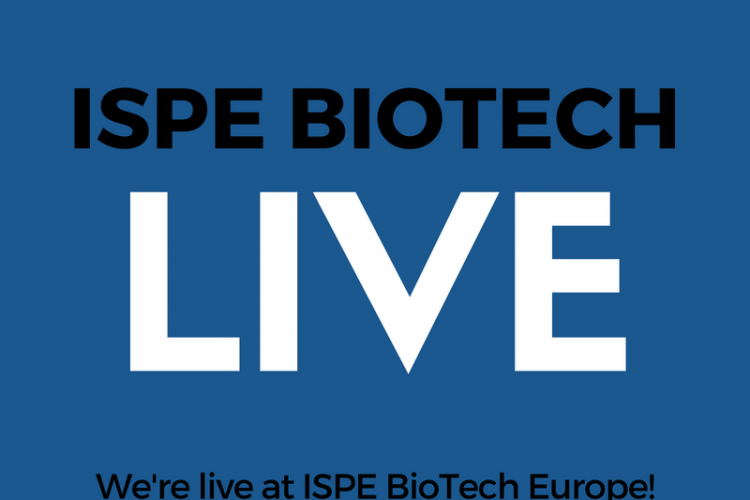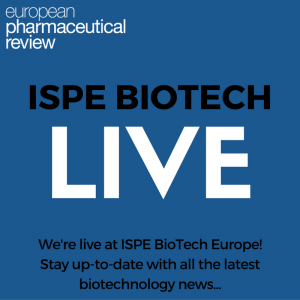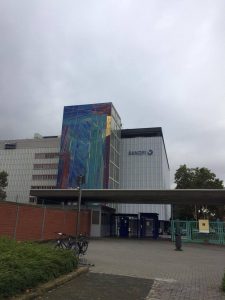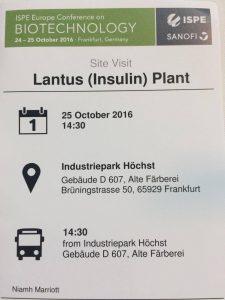LIVE: ISPE 2016 Europe Conference on Biotechnology
Posted: 24 October 2016 | | No comments yet
We’re live at ISPE 2016 Europe Conference on Biotechnology! Check this stream for live updates of the event…


All the information from presentations at IPSE 2016 Europe Conference on Biotechnology.
Scroll down for Day One…


DAY TWO
SESSION: PROCESS SCIENCE
Chair: Christoph Herwig, Vienna University of Technology
08.30 Data Science as Enabler for Scale-Up, Technology Transfer and Root Cause Analysis in Manufacturing




09.05 Reinventing Commercial Biomanufacturing
Safaraz K. Niazi, Founding Executive Chairman, Therapeutic Proteins International


09.40 Reduce Time to Market by Data Modelling in Analytics of Biopharmaceuticals


SESSION: TECHNOLOGY AND INNOVATION
Chairs: Ralf Kretzschmar and Mirian Monge
10.45 Production Control Strategy Automation and Integration Lifecycle – Can We Still Do with Paper?


11.15 Construction and Qualification of a Large-Scale Microbial Manufacturing Plant


11.45 Preparing Manufacturing Capabilities for Breakthrough Therapies


Discussed new Alzheimer’s facility set to go operational in 2019. Could benefit one million people so they are keen to get it completed.
“We havent had our moment, but we will”
The idea is to be “transformational to patients, transformational to our business and transformational to the healthcare industry. With Alzheimer’s, we haven’t had our moment yet…but we will”
12.15 Single-Use Depth Filter with Hyperion Flow: No Centrifuge Required in Mammalian Cell Culture Harvesting Applications Up To 2000L


12.35 Innovations in Fill and Finish Processes
Frank Lehle, Site Manager, Vetter Pharma
Discussed the design of ‘Best Practice COncept’ and looked at the advantages and disadvantages of closed/ open RABS. “Fully automated H2O2 – decontamination”. “Our target is to have a fully automation – cycle length limited to three hours and daily decontamination of the RABS Grade A in Cleanroom Grade B”
Site Visit: Lantus (insulin) plant



We’re off to visit the Lantus (Insulin) plant and European Pharmaceutical Review can take you with us. More to follow…
13.00 Welcome and Introduction
Dr René Labatut, Vice President Manufacturing Technology, Sanofi Pasteur


“…reinvent commercial biomanufacturing…the big units, one fits all, could disappear – that is the key message…innovations will be one the key things moving forward…its not ideas we’re looking for, its ideas that become business…there are a bunch of regulatory agencies who favour technology that can change the game. They can come from outside – from other space, other industry…”
Rene Labatut has experience in CMC Management in Biopharmaceutical Industry from research & development to manufacturing in highly regulated environment (US, EU, Japan, China etc). He is the Vice President of Manufacturing Technology of Sanofi Pasteur; the vaccines division of Sanofi. He has brought significant contribution to several key healthcare product developments like ceredase, thymoglobulin, hexavalent pediatric, flu and dengue vaccines.
Dr. Thomas Zimmer, VP European Operations, ISPE


Professor Wolfram Carius, Executive Vice President, Product Supply, Bayer
“…biologics are getting much more diverse and the technology is changing very much…we should not forget analytics, which is finally developing…changes are nothing which we make too easily in two or three years…we have to see the small signals and we have to move forward…”
Brendan O’Callaghan, Senior Vice President Biologics BP Specialty Care, Sanofi
Update: Brendan O’Callaghan is unable to attend the conference
SESSION: QUALITY AND REGULATORY


13.20 Biological Products, An Inspectors Point of View
Andrew Hopkins, Expert Inspector, MHRA


“…Is the current system fit for purpose? It’s not only about safe product but enough available safe product…fast but as safely as possible…it needs to be consistently manufactured…”
They have launched the MHRA Innovation office – set up by MHRA as part of the UK government’s industrial strategy for life sciences. It covers novel medicines, medical devices and processes used to manufacture these products. “A cross regulatory agency advice source…rather than having to go through so many different agencies you can sort it all out in one…
He then displayed his inspection findings, highlighting how the process is not always well defined and there are large knowledge gaps observed. “Training and knowledge are big things for me…I’m scared for us, for the industry, as we’re loosing a lot of knowledge…in the past, when it went wrong, you knew why. Now the knowledge isn’t there. that’s really one thing that worries me, knowledge management…”
Andrew Hopkins has been with the MHRA since March 2005 as a GMP Inspector and is currently the Chair person for the joint EMA and PIC/S working group regarding the potential update to EU GMP Annex 1. Prior to joining the Agency, he worked in the Pharmaceutical industry for approximately 20 years in positions including Quality Control, Quality Assurance and Production. Andew has a BSc Honours in Microbiology with Genetics and a Post Graduate Diploma in Industrial Pharmaceutical Science.”
14.05 Industry Response to Annex 2 and Enabling Closed Systems in CNC Environment
Dr Kavita Ramalingam Iyer, Regulatory Professional, Merck Sharp & Dohme Corp


“I will be wearing a regulatory hat but speaking with a industry perspective…
Annex 1: manufacture of sterile medicinal products
Annex 2: manufacture of biological active substances and medicinal products for human use (eg. manufacture of biological drug substance and intermediaries)
She’s advocating for a “closed system processing” as it is a “powerful measure for preventing contamination”.
Currently many use “artificial segregation and closed system – do we need such a “belt and suspenders” approach?.. yes we need to ensure product quality and patient safety…but we also need to re-think traditional approaches to area classification and embrace implementation of closed processing…” Ultimately, “one size does not fit all; qrm could provide different outcomes for different situations – and therefore different solutions…”
14.35 Continuous Biopharmaceutical Process in Single-Use Technology – Quality and Regulatory Aspects
Jorgen Magnus, Research and Development Manager, Bayer Technology
“We have a vision of the biofacility of the future: a small and flexible facility which can be built fast at a reduced cost…fast, flexible, small, inexpensive, sustainable, and we would need less than 25 million euros…
“The benefits of single use…throw away after use, no risk of contamination…”
“We built a demonstration facility with all the technology showcased including integrated continuous downstream processing, automatic sampling and assay – measured by central process control system….a totally automated system…the assays only take 45 mins, much better than sending it off to a lab and waiting 4 weeks for your results…
The whole process takes only 5 days and is as follows:
- assembly prep – assemble single use items and perform gamma irradiation, process set up
- connect modular assemblies, buffers and chromatography columns
- run process: process control via dcs, exchanged filters, exchange buffers and feed, automatic in process control samples, exchange of columns if needed
- stop process
- disassembly
“Ensuring quality assurance requires…process robustness – process must run in a reliable way, non-susceptible to disturbances, parameters constant, reliable single use…GMP readiness of continuous equipment…design and operating space of process parameters…process analytical technology….batch definition and product release…virus safety…microbial contamination in a continuous process…closed processing / integrity of su equipment….and risk management”
SESSION: KNOWLEDGE MANAGEMENT
Chairs: Frank Nygaard, CMC Project Director, Symphogen and Michelangelo Canzoneri, Head of Technology and Innovation Therapeutic Proteins, Sanofi
16.00 Knowledge Management within Pharmaceutical Engineering
Leif Poulsen, Partner, Global Consulting, Automation & IT, NNE Pharmaplan


“It’s hard to share knowledge with colleagues in different places…there is a language issue among other issues…but we have found something that is working…a common language to communicate…”
Poulsen highlighted the different strategies that NNE Pharmaplan have implemented:
Communtities of interest: “25 groups of professionals who share their knoweledge, make it accesible to customers through ‘our model’ – engineering model…benefits from single language and quick access to standards and guidelines as well as reference documents” Wiki: our encyclopedia, the handbook of ‘our model’ Connect: “It’s similar to Facebook – to have constant communication between industry workers…one forum for each question which you can then share knowledge and discussions through the stream…” Navigate: “We should embrace fresh new ideas from new young people starting in the industry AND we also need to show the history knowledge – this is a mentoring scheme to guide you through your first time period in the company…it’s to help you navigate your way” Peak: “Our training program…we want employees to become thought leaders within their field of expertise…and there is a continuous improvement cycle and continuous knowledge sharing”
“knowledge may be power but sharing, it is more powerful”
Leif Poulsen is a global technology partner within automation and IT in NNE Pharmaplan’s Global Best Practice group. His core competences lie within manufacturing execution systems and advanced automation and IT solutions and how they can support current and future business objectives. Poulsen is responsible for development of technology, methods and competences within automation and IT and works as a senior business consultant for customers worldwide. He is an expert on business analysis and conceptual design of automation and IT solutions.
16.45 Smooth Tech Transfer Through Smart Tools
Ciaran Kelleher, Principal Engineer, Janssen


“Tech transfer challenges arise…it’s a complex process, there are various levels of knowledge and indeed gaps in knowledge..there could be a lack of methodology and or a lack of guidance…this leads to many mistakes, budget overruns and significant delays. We have identified three major elements to work on: people, tools and practices
People engineers, scientists, operational personnel, facilities management/ maintenance, regulatory agencies…ALL help to sustain and support the process
Tools visual intuitive guide to lead users through process; data collection and knowledge management centre
Practices guidance material for teams – common sense work procedures that consistently prompt the “right” discussions and actions of the project team and not just “checklist behaviour”
“the importance of a cross functional team can just not be understated…it’s a successful structure”
17.15 Knowledge Transfer Methods and Tools in a Global Community
Elena Galiana Jaime, Senior Knowledge Manager, BASF
“three pillars for global impact: connect focus refine”
That’s all for today – check back tomorrow for more updates from European Pharmaceutical Review.



